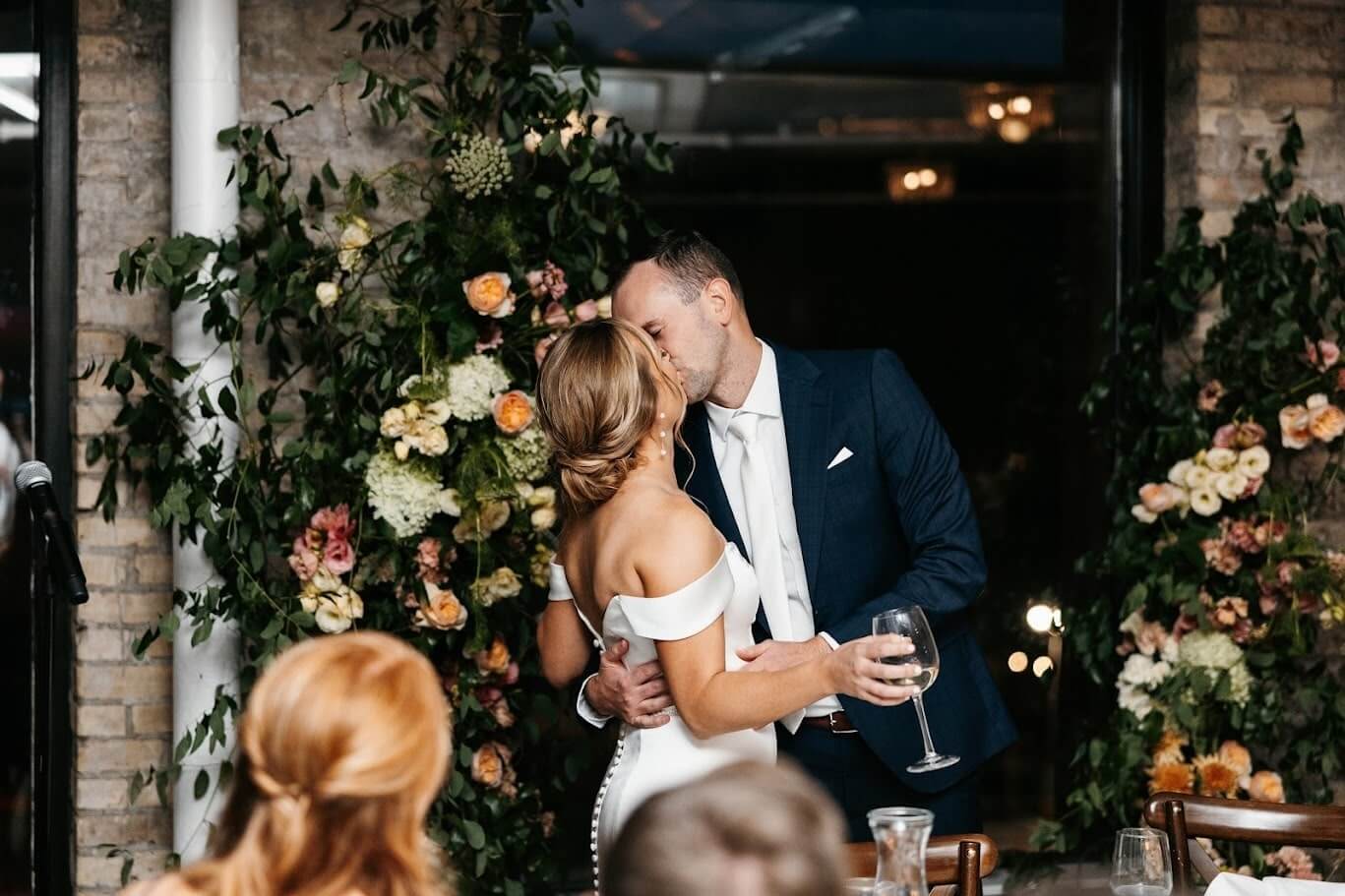
Weddings should be a time for love and connection. But at a traditional event with loud music, bright lights, and crowds of people, it’s easy for nervous systems to get overstimulated. Guests, and even the couple, may feel too much sensory input from all of it. But it’s possible to throw a sensory-friendly wedding that still feels stylish, happy, and celebratory for all.
Careful and thoughtful design can assist. It can prepare guests by setting clear expectations and giving them choices about where they might sit, how they might move through the space, or what volume levels they might encounter. This way, loved ones with diverse sensitivities or needs can stay longer, feel safer, and more fully enjoy the event.
In this article, we’ll cover how to plan neuro-friendly events and weddings in five areas: lighting, sound, layout and flow, event pacing, and communication strategies.
What “sensory-inclusive” actually means in practice
It’s natural to focus on autism first when you think about sensory-friendly events, but sensory inclusion is much broader. ADHD, PTSD, migraines, anxiety, or chronic illness can all cause sensory sensitivities. Even without a diagnosis, many guests find strobe lights, loud music, or harsh fluorescent lighting overwhelming. Neuro-inclusive design for a sensory-friendly wedding aims to make celebrations as comfortable as possible for all guests.
Two design goals: reduce surprise and create options
The overall sensory-friendly philosophy is simple. Reduce surprise so guests know what’s coming with transitions between “scenes” at the event being predictable and smooth.
Secondly, create options. Have multiple areas to sit or move through the space, and if there are quiet spaces and louder ones, let guests choose their comfort level.
Choose your inclusion level: “light touch” vs. “fully featured”
Couples and wedding planners are turning to neuro-inclusive wedding planning as a way to ensure that guests feel welcome without sacrificing the day’s energy or style, as not all couples need or want the same amount of sensory inclusive event design.
For some, it’s a light-touch effort, like providing earplugs for guests and a fragrance free wedding policy. For others, a more fully featured and intentional neurodiversity friendly event includes quiet rooms, sensory kits for guests, social story wedding websites, and trained vendors. Every couple and event will find a different balance.
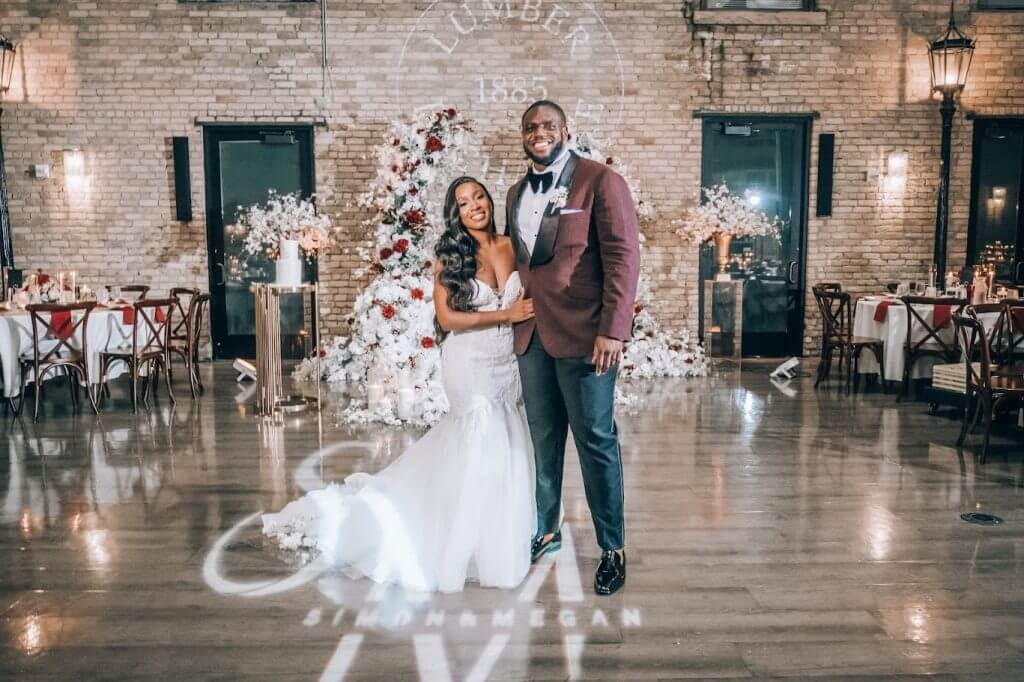
Layout and flow that prevent bottlenecks
Physical space: Allows for proper guest flow
The first place to start with a sensory-friendly layout is physical space and guest flow. Wide aisles and circular patterns (rather than dead ends) for moving through the event area helps keep spaces from becoming too congested. Keep in mind that not everyone wants to pass through the dance floor to get to a seat. Be sure guests have a seat-to-exit path that avoids both the dance floor and any other common bottleneck areas.
Micro-zones: Chat tables, dance area, quiet seating, hydration points
Break the event space into micro-zones. There should be a lively dance area, a quieter lounge seating area for conversations, tables or other seating for people to chat at, and hydration stations. Zoning creates micro low-stimulus areas naturally without isolating anyone from the party.
Wayfinding: Icons, arrows, place signs
The best sensory-friendly wayfinding signs use simple icons in high-contrast colors with arrows to show the way. Place wayfinding signage before a choice is made so that guests have time to read it. Use signs that match the actual room layout (“arrow turns left exactly where the hallway turns left”) and anticipate potential confusion/conflict stressors.
Clear visual wayfinding signage makes it easier for all guests to navigate the event with confidence and less stress.
Read More: The Role of Venue Ambiance and Amenities
Lighting that soothes instead of spikes
Remove true strobe effects; avoid rapid-pulse LEDs
A strobe light warning wedding notice is mandatory on the invite if strobe effects will be used, but should be avoided entirely at best. Rapid-pulse LEDs can also trigger migraines or sensory overload.
Dinner and dance scenes: warm and low contrast
Even the sensory-friendly ceremony itself can benefit from thoughtful touches like softer lighting, reduced amplification, and clear cues to help guests anticipate transitions.
Plan for lighting to shift in “scenes.” Dinner often works best with warm, dimmable light and low contrast. The dance floor can be brighter, but transitions should be predictable, like using fades, not bursts. sensory-friendly lighting should feel festive without jarring the nervous system.
Photo-friendly without glare and no-flash areas
Ask the wedding photographers to use diffused light instead of glaring bright flashes. Establish a designated no-flash area where guests can take a break if needed. This ensures your photos still look great, but everyone stays comfortable.
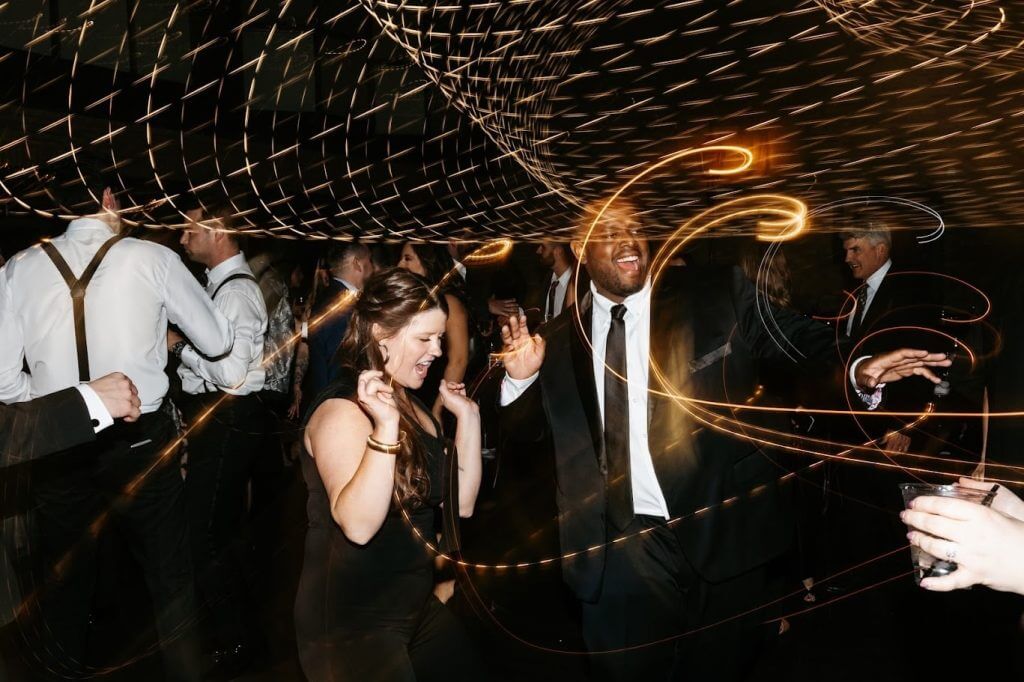
Sound that supports conversation and dancing
Volume caps with spot checks
Set levels with the DJ or band before the event. Cap the volume in lower levels for dinner or conversation scenes and higher for dancing. Check sound levels from guest ear height, not just the booth, to make sure there aren’t overly loud hotspots. Place speakers strategically to prevent pockets of intense sound and announce set breaks in the run-of-show.
By setting sensory-friendly music levels, couples can keep the dance floor lively while still protecting guests from overwhelming noise.
Earplug station at welcome; “quiet song” requests for early dancers
Offer guests earplugs from the welcome table. Work with the DJ to allow “quiet song” requests or give early dancers a way to join the floor without peak volume.
The quiet room that actually gets used
Near the main room and with a door
A quiet room wedding setup can be life-changing for guests. Place it near, or adjacent to but not inside, the main room with a door guests can access. Soft seating, a lamp, water, simple fidgets, and a charging station are good quiet room essentials.
Clear signage
Use clear signage like: “Quiet Room: Low light, soft voices”. Suggest a 20-minute limit but don’t enforce it.
Assign a reset point person
Designate a staff member or volunteer to be the “reset point” person who refreshes the space as needed.
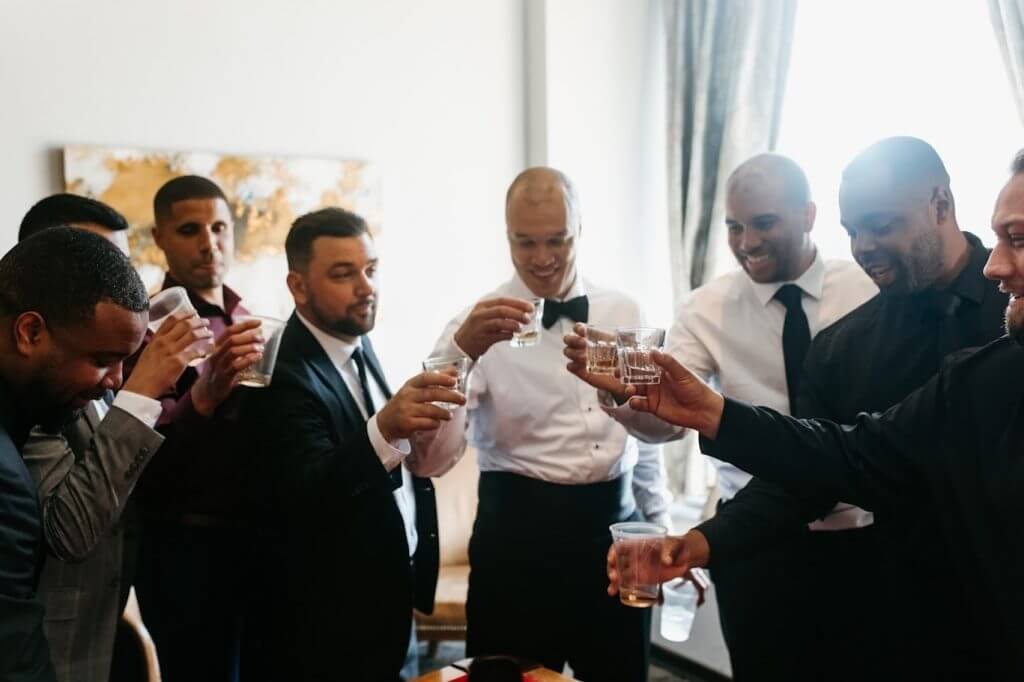
Scent, food, and comfort choices
Create a fragrance free event
Include a fragrance free wedding line in invites. Skip scented candles, or swap for greenery or unscented candles.
Label menus clearly
Provide menu labels with allergens and also offer caffeine-free and alcohol-free versions of drinks when possible.
Provide comfort kits
Prepare a comfort kit of earplugs, sunglasses, tissues, water, and simple fidgets. Put a bin near entryways or have ushers offer kits to guests who look like they could use one.
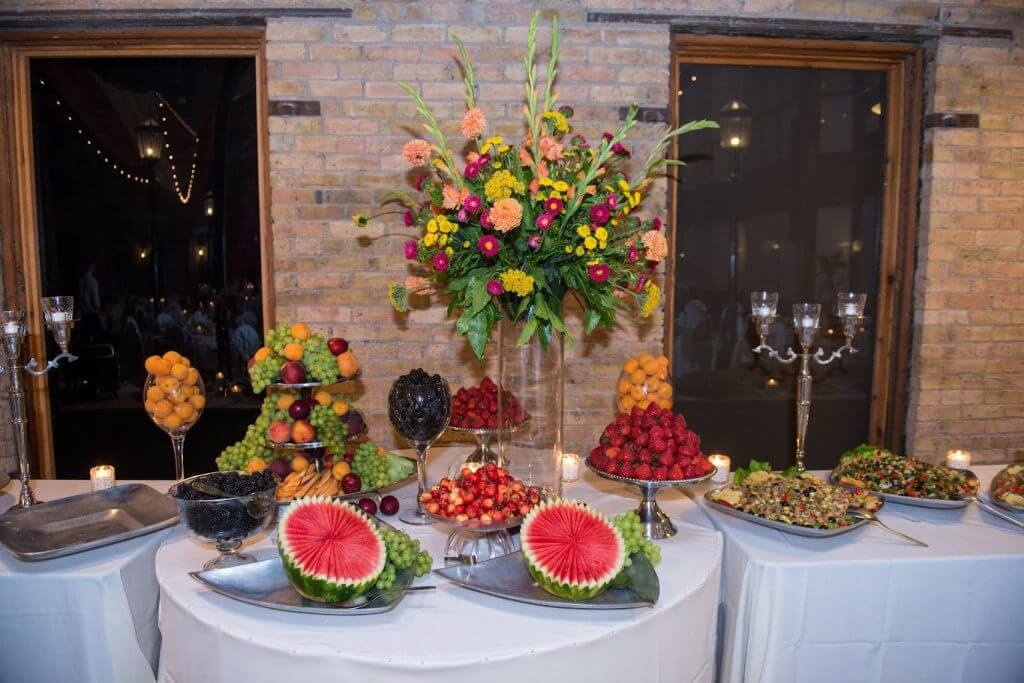
Communication that reduces uncertainty
Add a simple social story page with space photos and timeline
A social story wedding website can let guests know what to expect with photos of the venue, a description of each activity step by step, and a predictable event schedule they can check repeatedly.
Publish heads-up notes
Posting heads-up notes on the website, programs, or on signs (such as lighting effects, fragrance policies, quiet room location, etc.) as well as other accessible wedding communication helps guests know what to expect.
Color-coded sticker/lanyard system for social preferences
Offer a color-coded lanyard system to communicate social preferences (green = happy to chat, yellow = quiet conversation, red = need space). Guests can use the social signals to self-regulate with less awkwardness and pressure.
Read More: Wedding Reception Traditions For Your Big Day
Vendor briefing: what to ask and how to enforce
DJ/band
Brief entertainment vendors at the planning stage. Include clear inclusive vendor briefs such as no strobe or problematic effects, predictable lighting and volume transitions, and one designated low stimulus reception dance block.
Photographers
Photographers should adhere to flash rules (or at least use diffused light) and “pause” signals. Additionally, a shorter shot list limits congestion around the couple or each family picture.
Venue
Choose venues with accessible seating plans, restrooms, and step-free routes. Confirm who is responsible for placing signage in each area.
The Lumber Exchange in Minneapolis is a historic venue that combines 19th-century architecture with modern amenities, making it flexible for sensory-inclusive event design.
Read More: Essential Tips for Selecting the Perfect Outdoor Wedding Venue
Planner/MC
The planner or MC should announce transitions out loud, narrate for guests, point out when water breaks are happening, and remind guests about the quiet room.
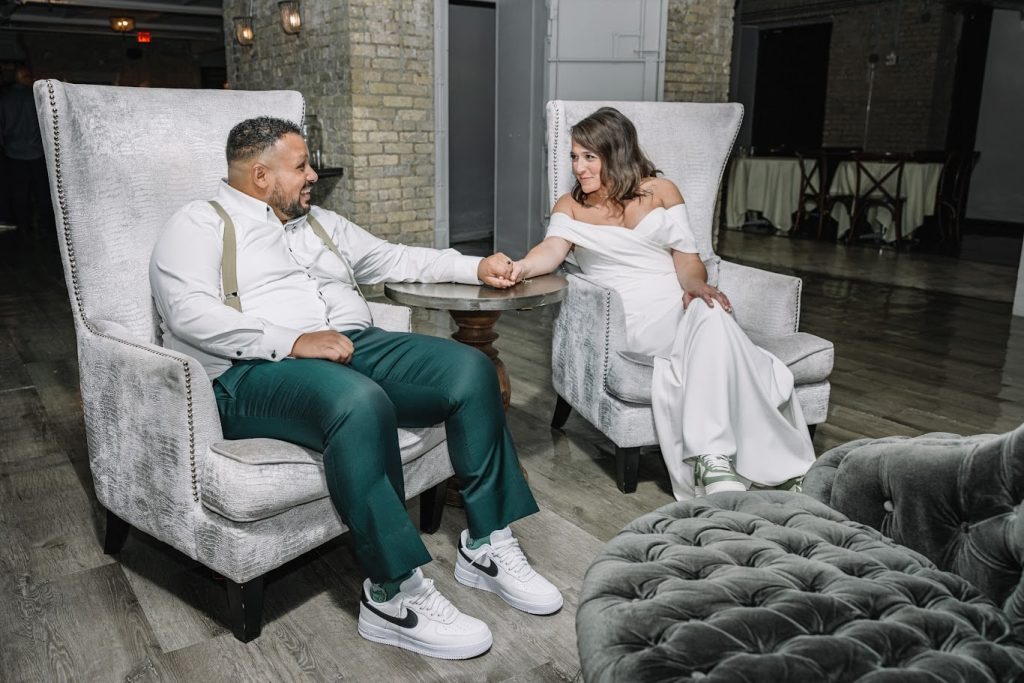
Assets to prepare
Floor plan with zones + signage map
Design a floor plan with marked micro-zones, traffic flow, and wayfinding signage. Share with vendors ahead of the event.
Quiet-room packing list
Prepare a quiet-room packing list, one-page vendor brief, and guest notice cards with a polite explanation of requests (fragrance free, dim-light spaces, etc.).
Many autism-friendly wedding tips, like avoiding strobe effects, offering quiet seating, and preparing sensory kits, also benefit guests with anxiety, migraines, or chronic fatigue.
FAQ
What makes an event “sensory-friendly?”
Designing a space that has lower light and sound changes and providing areas that are quieter or calmer.
Is sensory-inclusive planning only for autistic guests?
No. It’s for any guest with sensitivities, ADHD to migraines, and anxiety.
Do we have to eliminate dance-floor energy?
No. Use predictable lighting fades and volume caps but keep momentum.
Read More: The Wedding Dance Floor: Songs You Need to Know
How big should a quiet room be?
Enough for four to six people at once, near the main room with a door and soft lighting.
What should be in a sensory kit?
Foam earplugs, sunglasses, water, tissues, small fidgets, and a simple info card.
How do we communicate rules without sounding strict?
Keep it warm and factual on the wedding website and signs, and remind guests it’s for their comfort.
Can vendors still use flash or effects?
Yes, but with boundaries. Don’t use strobe, announce flash zones/times, and keep transitions predictable.
What if the venue has limited space?
Carve out a calm corner with screens or drapes; lighting and soft seating can also help reduce stimulation. If a full quiet room isn’t possible, a smaller calm corner setup with partitions, soft chairs, and dim lighting can still provide a restorative space.
Read More: How To Personalize Your Wedding Reception Space
How early should guests be told?
Mention early on the invite or your website, and set a reminder the week of via email.
Is there training or certification to consider?
Some offer sensory inclusive certification. Ask vendors if they have training or will follow guidelines.
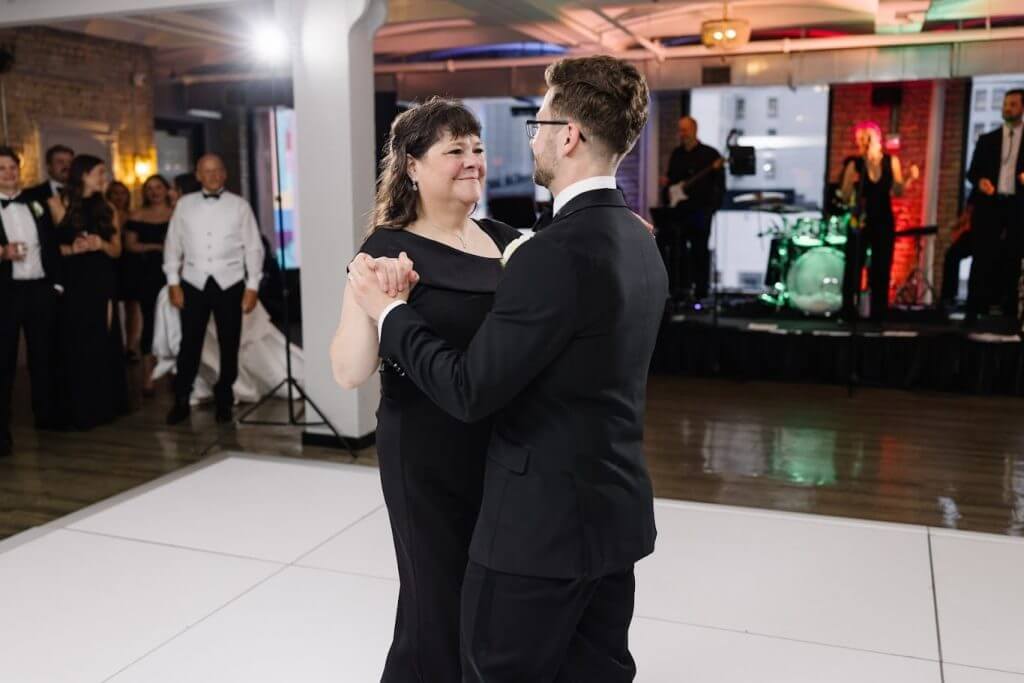
Bringing It All Together
A sensory-friendly wedding doesn’t mean you have to give up the energy or the joy. By rethinking the layout, lighting, sound, scent, and communication, you design a celebration that lets more guests stay longer, thrive, and dance the night away. Whether you go the light-touch route or deep dive into a full neuro-inclusive plan, the goal is the same: A wedding that’s not just your style but reflects your care for your community, too. These small, intentional design choices add up to neurodiversity-friendly events where more guests feel safe, included, and celebrated.
If you’re in Minneapolis and looking for a beautiful wedding venue that balances historic elegance with the flexibility to make your wedding sensory-friendly, consider the Lumber Exchange.


Sorry, the comment form is closed at this time.